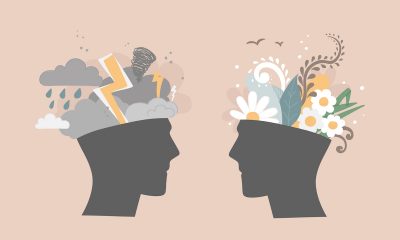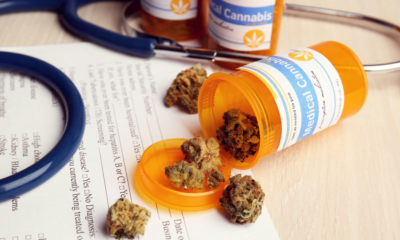Timothy Byars, director of Cannabis Programs at Pacific College of Health and Science in the US, explores what clinicians need to know when it comes to cannabis and potential drug interactions.
There are currently 21 states, Washington DC, and Guam that have legalised adult-use cannabis. Four additional states (Ohio, Oklahoma and Pennsylvania, and Minnesota) will vote to legalise adult-use cannabis in 2023.
A poll from April 2022 suggested that 52% US adults have tried cannabis, and among those who have tried, 72% stated that they used cannabis in the past month (adults ages 45 and 64 were the most likely to have tried cannabis—63% of the respondents were in this age group).
Annual cannabis sales reflect these growing usage trends, as sales reached $27 billion in 2022 and sales are forecasted at nearly $32 billion in 2023. Annual sales are expected to top $50 billion by 2028.
Clearly, cannabis legalisation is here to stay. And, it’s reasonable to expect some federal cannabis reform during this congressional cycle.
As patients in an increasing number of states are permitted to try cannabis, the quotidian model in which healthcare professionals send their patients to cannabis dispensaries for medical advice is no longer tenable. Healthcare professionals must become informed about cannabis administration, drug-to-drug interactions, potential benefits, appropriate use, and adverse effects.
Currently, many cannabis patients do not share their cannabis use with their primary care provider and lack confidence in their primary care provider’s ability to help inform them about appropriate cannabis use. Consequently, these patients seek advice from cannabis dispensaries, friends, and the internet, none of which are optimal resources for medical advice.
For example, one study of medical cannabis dispensary customers suggested that 64% of the customers surveyed stated that they initiated cannabis use without the prior knowledge or consent of their primary care physician. Only 18% of those surveyed considered their primary care physician a very good or excellent source of information about medical cannabis. Furthermore, 86% of respondents had substituted cannabis for at least one pharmaceutical medication and nearly half of those reported that the clinician was currently unaware of the substitution.
To complicate matters, there are hundreds of cannabis products with varying potencies, multiple cannabinoid combinations, varying terpene profiles, and multiple routes of administration. Patients are left to determine how much of a cannabis product to take, how to titrate that dose if the starting dose isn’t effective, when to take the medicine, and for how long. Furthermore, patients have no information about potential side effects, how to mitigate adverse effects, or what to do if they experience an adverse effect.

Recall that adults ages 45 and 64 were the most likely to have tried cannabis in the past year. Of course, prescription drug use generally increases with age. According to the Center for Disease Control and Prevention, nearly half of all adults aged 20–59 have used a prescription drug in the past month. Nearly all adults aged 60 and over have used a prescription drug in the past month (an estimated 85%). These patients currently receive no information about potential interactions when using cannabis and prescription drugs.
Potential cannabis-drug interactions.
One family of enzymes—the cytochrome P450 enzymes (CYPs)—metabolises many of the pharmaceutical drugs we consume, typically by breaking down these drug compounds and making them more water-soluble (in fact, it’s estimated that 90% of all drugs we consume are metabolised by as few as six enzymes in the cytochrome P450 family). Cannabinoids, such as THC and CBD, also interact with these enzymes. Using cannabis together with prescription medications can impact the effect of the prescription drug and the effect of the cannabis.
Some of these interactions can produce adverse or unwanted effects. For example, some cannabinoids (such as THC) can produce sedation and significant interactions can occur if THC is administered with a second depressant, such as alcohol. In one study with human volunteers, researchers stated that alcohol increased the level of THC in the blood and the volunteers reported an increase in subjective adverse effects of cannabis.
Some cannabis-drug interactions, however, can produce positive effects. There is a growing body of evidence to suggest that patients using cannabis with opioids are recognising opioid-sparing effects with their cannabis use—these patients are able to reduce their opioid dose without sacrificing efficacy when they use opioids in conjunction with cannabis. For example, in a cohort study with over 8000 patients with chronic pain, medical cannabis users were able to reduce their prescription opioid dosages by 50%.
Based on stories published in the media, patients might assume that the risk of cannabis use in combination with their prescription drugs is too risky, but drug interactions with cannabis are rarely so dangerous as to discontinue its use—some combinations simply require patients to work closely with a knowledgeable cannabis clinician. For example, a case report published by the University of Alabama described how physicians successfully managed a common cannabinoid-drug interaction despite working with medication—in this case, warfarin—with a narrow therapeutic window.
The case report describes a patient taking warfarin daily and who began using Epidiolex (a highly processed, plant-derived CBD medication). CBD inhibits the enzymes that metabolise warfarin (CYP2C9 and CYP3A4) and subsequently increased the effects of the warfarin (enzyme inhibition resulted in more warfarin reaching the bloodstream, leading to an increase in effects). As the target dose of CBD was increased, the clinicians simply monitored the warfarin concentration levels and, eventually, set the final warfarin dose at about 70% of the original dose. The patient continued to take both medications safely and effectively.
Advice for clinicians
When a patient uses cannabis as a medicine, their clinicians should approach its use no differently than other medications. Clinicians should help their patients determine the appropriate starting dose (which can depend on multiple factors, including the potency of the product, the consumer’s experience with cannabinoids, the condition that they’re attempting to help treat, their age, their health and health history, and other factors), help identify appropriate cannabinoids for the patient’s condition or disease, help their patients understand which products and which route of administration will likely be most effective, and identify potential benefits, risks, and interactions.
To help identify potential interactions, clinicians can use tools and resources that already exist for their practice. For example, the EBM Consult searchable online system includes 16 different databases of free core medical education information for healthcare professionals. And, cannabis-specific tools are becoming available to help clinicians and organisations establish protocols and identify potential drug-to-drug considerations.
Patients are using cannabis. Healthcare professionals will treat these patients. As cannabis reform gains ground in the U.S. and as usage trends continue upward, it’s now imperative that clinicians begin to better understand cannabis pharmacology to better serve their patients.
Timothy Byars is the director of Cannabis Programs at Pacific College of Health and Science in the US. He is a researcher, writer, and curriculum developer with over 20 years of experience writing, editing, and developing content, and has been active in the cannabis industry since 2014.
Home » Comment » Cannabis-drug interactions: addressing the gap in clinician education

 News6 months ago
News6 months ago
 Science5 months ago
Science5 months ago
 Industry6 months ago
Industry6 months ago
 News6 months ago
News6 months ago
 News5 months ago
News5 months ago
 Health5 months ago
Health5 months ago
 News5 months ago
News5 months ago
 Health3 months ago
Health3 months ago













